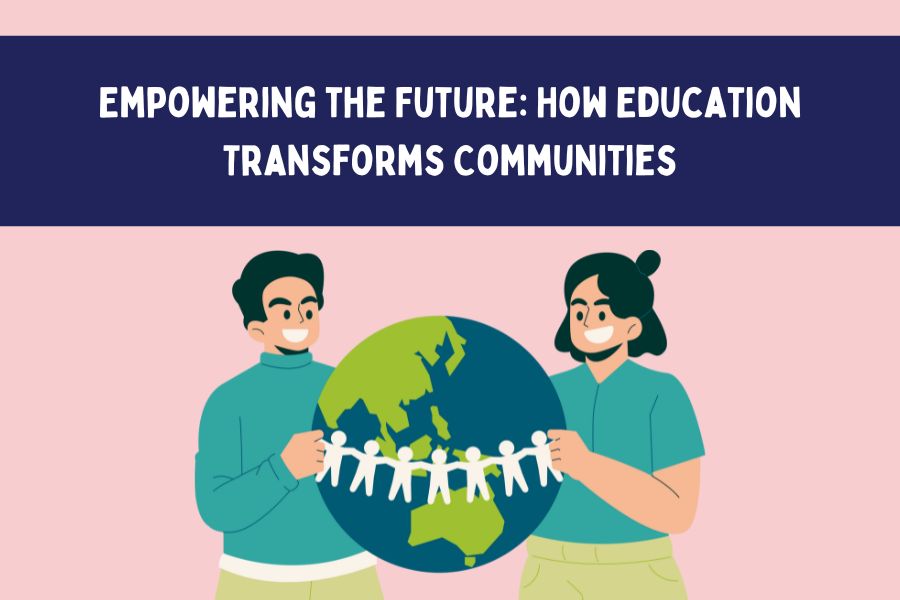Empowering the Future: How Education Transforms Communities

Education has long been recognized as the cornerstone of progress, not just for individuals but for entire communities. When children and youth are educated, they grow up with the tools to challenge poverty, make informed decisions, and contribute meaningfully to society. Across India, the push for universal education has brought significant strides, yet challenges remain—especially in underprivileged and rural areas. In these regions, access to quality education is still seen as a privilege rather than a right. This makes it essential to spotlight the efforts and strategies that are helping bridge this educational gap.
The Role of Grassroots Initiatives in Education
One of the most impactful methods of bringing education to marginalized communities is through grassroots organizations. These initiatives often focus on the most vulnerable groups—children from low-income families, street children, and those living in slums—offering not just academic learning but holistic development. Localized efforts are usually better adapted to the unique needs of each community. They focus on flexible teaching methods, vocational training, and emotional well-being along with academic knowledge. Moreover, by working directly with communities, these initiatives help build trust, which is vital in encouraging parents to send their children to school.
Technology as a Game-Changer in Learning
With the proliferation of digital tools and online platforms, education delivery is being revolutionized. Even in remote areas, technology is helping reduce the digital divide through e-learning modules, recorded classes, and mobile apps. Government and private players have introduced several models that use tablets and smartphones to bring education to the fingertips of learners. Interactive platforms not only make learning more engaging but also help personalize it according to a student’s pace. However, the success of these initiatives depends heavily on accessibility—both in terms of devices and internet connectivity.
Teacher Training and Educational Infrastructure
A strong education system cannot function without well-trained educators. Across the country, there is growing emphasis on upskilling teachers, especially those working in government schools or rural setups. Training programs now include not just subject matter expertise but also modules on child psychology, inclusive education, and use of digital tools. Infrastructure development, too, plays a key role. Having clean classrooms, access to clean drinking water, functional toilets, and proper lighting can significantly enhance the learning environment. These basics often determine whether a child continues their education or drops out early.
Local Efforts That Make a Big Impact
Amidst various educational initiatives, one notable effort is by an education NGO in Delhi that has been transforming the lives of thousands of slum children by providing access to quality education. The organization works with volunteer teachers and partners with local schools to ensure that children not only get enrolled but also receive continuous academic and emotional support. Their evening classes, mentorship programs, and career counseling sessions have been pivotal in helping students stay in school and aim higher. What sets them apart is their focus on holistic learning—offering dance, arts, and sports along with regular subjects, helping children find confidence and build life skills. This approach has shown remarkable outcomes, with many students going on to pursue higher education and stable careers.
Fostering Equality through Education
Gender disparity in education remains a pressing issue in several parts of India. To combat this, the government and non-profit organizations have implemented numerous education schemes for girls in India, aiming to not just increase enrollment but to ensure retention and quality of learning. Schemes like ‘Beti Bachao Beti Padhao’, ‘Kasturba Gandhi Balika Vidyalaya’, and ‘National Scheme of Incentive to Girls for Secondary Education’ are designed to reduce the financial burden on families, provide free uniforms, books, bicycles, and even scholarships. These efforts, combined with community awareness campaigns, have played a critical role in improving the gender ratio in schools.
However, true transformation requires societal change as well. Education for girls is often seen through the lens of tradition and marriage. Empowering families with information about the long-term benefits of educating their daughters—such as improved health outcomes, delayed marriage, and financial independence—is vital. More female teachers in schools and gender-sensitive curricula also contribute to creating a safe and supportive environment for girls.
The Ripple Effect of Educating One Child
The impact of educating a child goes far beyond the individual. When a child learns to read, write, and think critically, they influence their family, peers, and community. Educated individuals are more likely to participate in civic life, understand their rights, and demand better governance. They are also less likely to be involved in crime and more likely to raise educated children themselves, creating a cycle of positive change. In this way, education becomes not just a tool for personal growth but a powerful force for societal transformation.
A Collective Responsibility
While the government continues to build infrastructure and launch educational policies, the responsibility of educating the nation cannot rest solely on its shoulders. Parents, teachers, NGOs, private companies, and individuals all have a role to play. Whether it’s by volunteering time, donating books, sponsoring a child’s education, or simply spreading awareness, every effort counts.
The road to an educated and empowered India is long, but every step forward counts. From government policies to local NGOs, from digital classrooms to inclusive teaching practices, the momentum is growing. By ensuring that every child—regardless of gender, background, or geography—has access to quality education, we can truly unlock the potential of our nation’s future.